Rank Species | Scientific name Cyphoma gibbosum Higher classification Cyphoma | |
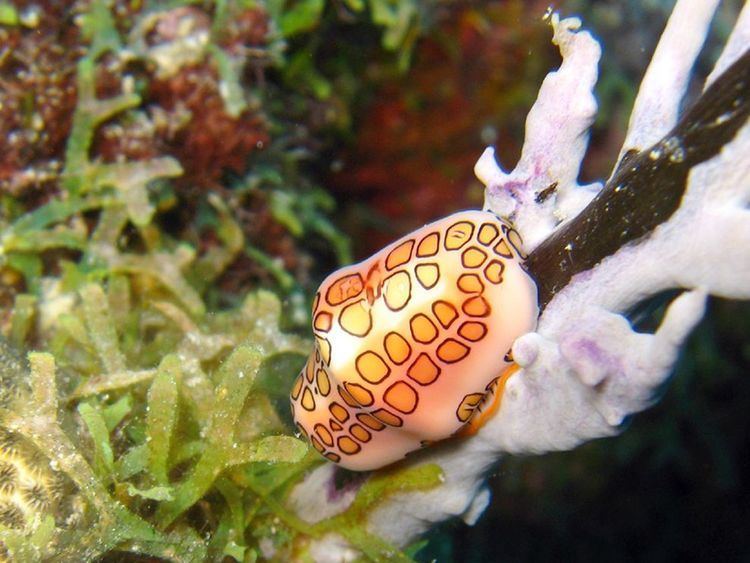 | ||
Similar | ||
Creaturecast flamingo tongue snails
The flamingo tongue snail, scientific name Cyphoma gibbosum, is a species of small but brightly colored sea snail, a marine gastropod mollusk in the family Ovulidae, the cowry allies.
Contents
- Creaturecast flamingo tongue snails
- Flamingo tongue snail
- Distribution
- Description
- Ecology
- Survival status
- References
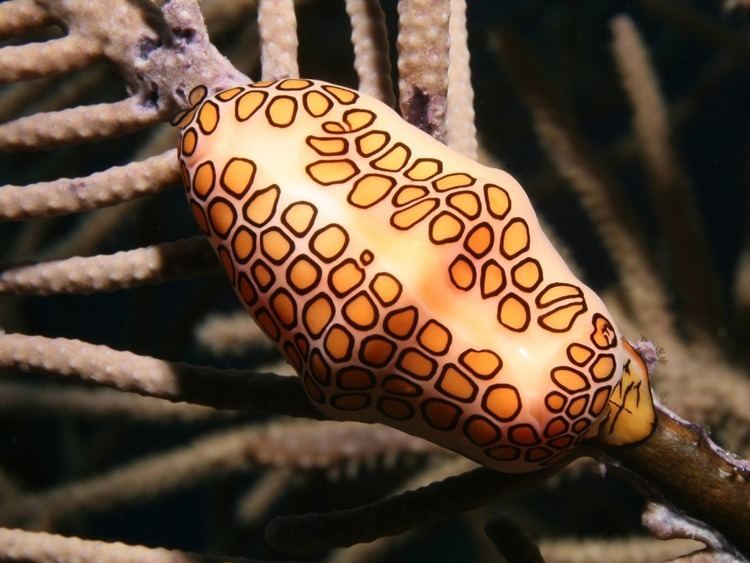
Flamingo tongue snail
Distribution
This Cyphoma is the most common of several species in the genus which lives in the tropical waters of the western Atlantic Ocean from North Carolina to northern coast of Brazil, including the Bermuda, the Caribbean Sea, the Gulf of Mexico and the Lesser Antilles .
Description
When it is living, the snail appears bright orange-yellow in color with black markings. However, these colors are not in the shell, but are only due to live mantle tissue which usually cover the shell. The mantle flaps can be retracted, exposing the shell, but this usually happens only when the animal is attacked.
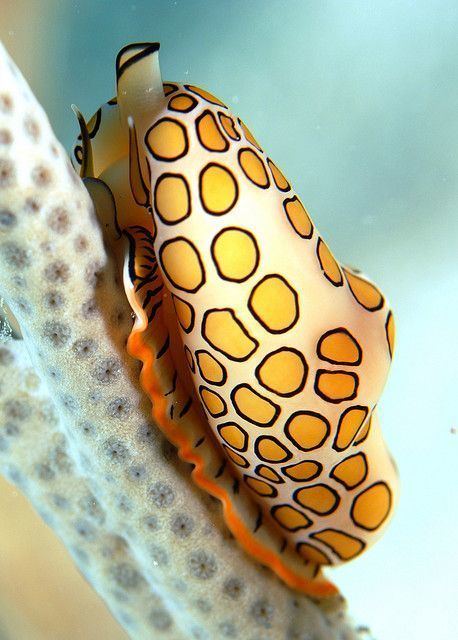
The shells reach on average 25–35 millimetres (0.98–1.38 in) of length, with a minimum size of 18 millimetres (0.71 in) and a maximum shell length of 44 millimetres (1.7 in). The shape is usually elongated and the dorsum shows a thick transversal ridge. The dorsum surface is smooth and shiny and may be white or orange, with no markings at all except a longitudinal white or cream band. The base and the interior of Cyphoma gibbosum shell is white or pinkish, with a wide aperture.
Ecology
The minimum recorded depth is 0 m; the maximum recorded depth is 29 m.
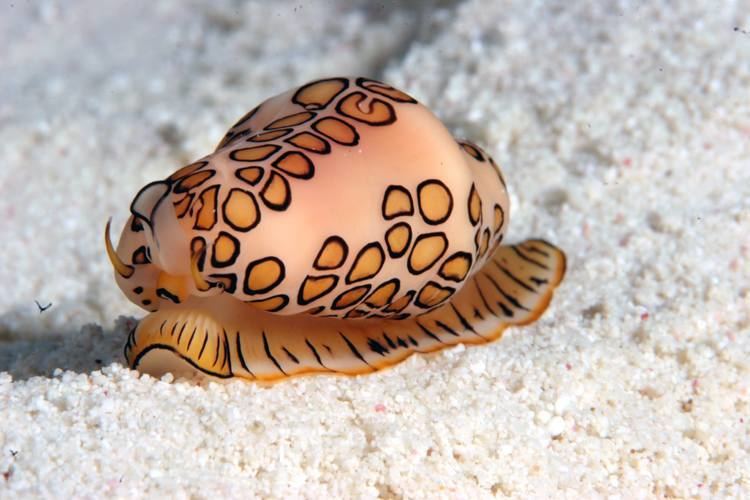
The flamingo feeds by browsing on the living tissues of the soft corals on which it lives. Common prey include Briareum spp., Gorgonia spp., Plexaura spp., and Plexaurella spp. Adult female C. gibbosum attach eggs to coral which they have recently fed upon. After roughly a week and a half, the larvae hatch. They are planktonic and eventually settle onto other gorgonian corals. Juveniles tend to remain on the underside of coral branches while adults are far more visible and mobile. Adults scrape the polyps off the coral with their radula, leaving an easily visible feeding scar on the coral. However, the corals can regrow the polyps, and therefore predation by C. gibbosum is generally not lethal.
Survival status
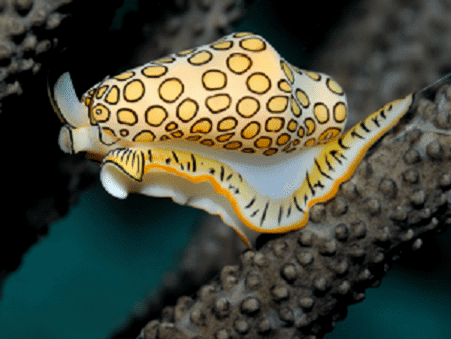
This species used to be common, but it has become rather uncommon in heavily visited areas because of over-collecting by snorkelers and scuba divers, who make the mistake of thinking that the bright colors are in the shell of the animal.
